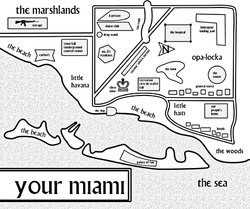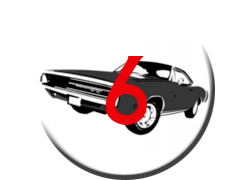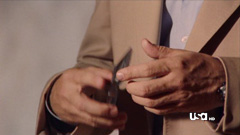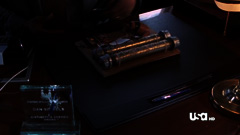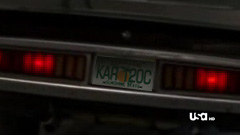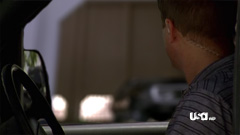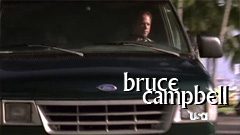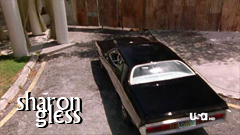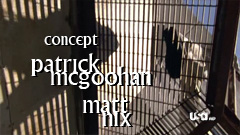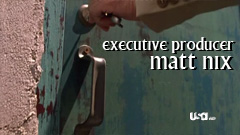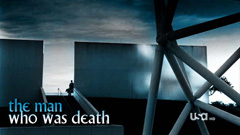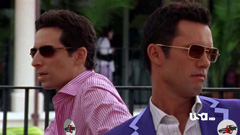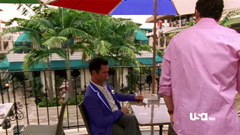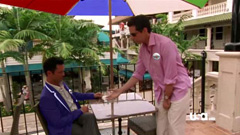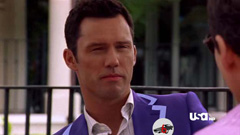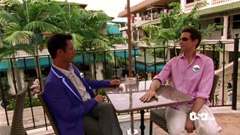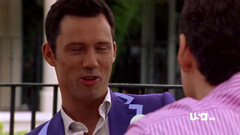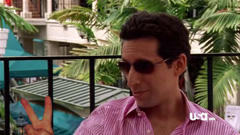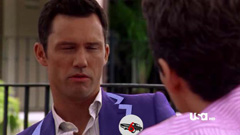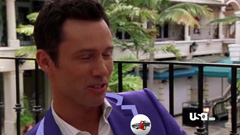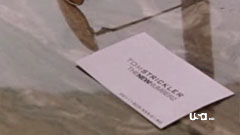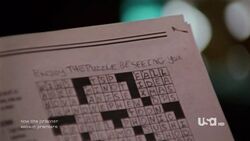The Prisoner (US Remake)
The Prisoner (US Remake) is a US Remake of the 1967 British Spy Drama The Prisoner. It stars Jeffrey Donovan, Gabrielle Anwar, Bruce Campbell, and Sharon Gless, and is written and produced by Matt Nix and the since defunct Patrick McGoohan. The series premiered on June 28, 2007 on the USA Network and is in its sixth season. As with many American remakes of British television shows, The Prisoner (US Remake) seeks to appeal to a wider audience than the original by removing obfuscatory Britishisms and substituting in American cultural references and a higher special effects budget.
The series follows former spy Number Six (Donovan) as he attempts to discover who exiled him to the tropical resort town of Miami and why, and escape.
Miami
Miami is the fictional setting where Number Six is interned alongside other former spies and operatives. Its location is never given, though in the episode "Many Happy Old Friends", it is estimated to be roughly eight thousand miles west of Dubai. In the episode "The Chimes of St. James", Number Six ostensibly escapes to Montego Bay but later realizes he hasn't left Miami when his deceivers neglect to account for the time difference; if the bearings given in that episode were accurate, Miami is roughly 300 miles north of Cuba and 500 miles north of Jamaica. The location where The Prisoner (US Remake) is filmed is a secret that will not be revealed until the show has wrapped, to keep tourists away from the sets at the request of the resort's owner.
In Miami, Number Six encounters several old friends he had lost contact with, including former girlfriend Number Twenty-Two (Anwar), an ex-IRA operative who paradoxically enjoys the safety of Miami and then goes out of her way to make it as dangerous as possible, and Number Forty-Eight (Campbell), a retired FBI operative who finds simple pleasure in flattering aging former femme-fatales (his "lady-spies") in exchange for material comforts. Both of these friends will assist Number Six in any subversion or escape scheme that he concocts, but neither is all that enthusiastic about his goals.
Whenever Number Six attempts to simply leave Miami, he is stopped by a character named Madeline Westen. Madeline was originally supposed to be played by Summer Glau and be a stiff, robotic character with lots of flashy moving parts, and was all set to go when Glau sank into the ocean. At this point, Nix decided to rewrite the character as Number Six's irrepressible middle-aged mother, played by Sharon Gless, reportedly after seeing a meddlesome weather balloon float over the set. This new character was an immediate hit with the writers and the audience alike, and, despite the money lost in the incident, the show's creators thank kismet whenever the original character design is brought up. Number Six will occasionally and reluctantly solicit the help of former Navy Seal Number Sixty-Six (Chris Ellis), who is the only Miamian who seems to be able to placate Madeline Westen.
Miami, Number Six believes, is run by a character named Number One who is also responsible for his burn notice, and whose identity has not been revealed. The day to day operations of Miami are run by a revolving cast of characters all named Number Two, who has been played by Alex Carter, Arye Gross, Lucy Lawless, Richard Schiff, John Mahoney, Moon Bloodgood, P.J. Byrne, Ben Shenkman, and Chris Vance. Though most Number Twos were replaced by a new Number Two after one to three episodes, Tricia Helfer, the fans' favorite, held the role for the entirety of season 2, at the end of which she was killed on screen. China Chow is the only Number Two who is later demoted, in part for sympathizing with Number Six, and makes appearances throughout the show as a regular inhabitant of Miami. The fate of all of the other Number Twos is unknown.
Episode Structure
Every episode of The Prisoner (US Remake) begins with the iconic opening sequence that explains the premise, with some exciting car chase footage and an explosion included to engage the viewer. Following this is a short teaser, a title card, and then the show's oft-quoted "I am not a number" exchange. The episode plot usually consists of Number Six's attempts to escape Miami or discover why he was sent there, or attempts by Number Two and his or her associates to either win over or brainwash Number Six. There is usually a secondary plot in which Number Six interacts with the other people in Miami, many of whom are retired ex-spies complacent to live there. The end credits sequence echos abstract symbolism seen throughout the show, and is usually compressed to the side of the screen and played over the first minute of Psych.
Opening Sequence
|
thunder clap |
NARRATION |
|
|
|||||||||||||||
Title Card Sequence
After a short teaser that sets up the episode's premise, the episode's title card is briefly shown. After this begins an exchange between Number Six and that episode's Number Two, or, in the cases where the identity of Number Two is an important plot point, a stand in. Though this exchange always follows the same script, no two are alike, as the various actors portraying Number Two will interpret the scene in their own unique ways. The following example is from third season episode "The Man who was Death", with Ben Shenkman playing Number Two.
|
You know, I'd've figured you'd run surveillance from the bistro because of the sightlines but you know, you're right. This place is better. Better escape routes, better iced tea... |
Where am I? |
In Miami. |
Which side are you on? |
I'm still working on that. Now you're a man with enemies. We know that. But your enemies have enemies of their own... |
interrupting |
We want information. Information. Information. |
You won't get it. |
The new Number 2. |
Who is Number 1? |
You are number 6. |
I am not a number. I am a free man. |
Okay, okay. You have my number, we'll talk soon. Unless some Ukranian cuts your tongue out first. |
Closing Credits
The closing credits appear over a sequence of restoration diagrams of a 1973 Dodge Charger. After the car is fully restored, the shot changes to Madeline Westen, an ebullient middle-aged woman, splashing through the water in a white bathing suit.
Differences from the original
| Selected Quote |
| (see all) |
|
Low-fat Yogurt? Frightened of putting on weight? NUMBER 6 No big secret. I just looooooove yogurt.
|
The Prisoner (US Remake) was funded by the fruits of American Capitalism and not, as the original was, by British taxpayers. As such, the budget was higher and, like with many American remakes of British shows such as The Office (US Remake), Queer as Folk (US Remake), Sanford and Son (US Remake), Three's Company (US Remake), and Life on Mars (US Remake), seasons lasted longer and more episodes were made. As a result, the simple premise was more further developed and the quirky British bits that didn't make sense were more clearly explained. A number of major changes were made to the characters and the plot.
- In The Prisoner (US Remake), Number Six's name is given as Michael Westen. In the original, Number Six's name was John Drake and it was never explicitly given. The name "John Drake" was considered "too British" by test audiences even though the original John Drake character was American. This change angered the then-alive Patrick McGoohan, who did not find out until after the first episode was aired. This production in-joke was referenced in the episode "Foes. Friends. And Family." when Number Forty-Eight said "Hey, you want to pick the name, you gotta go to the meeting."
- In the original, Number Six quit being a spy for unknown reasons. The producers of the US remake felt that the audience would not sympathize with a quitter, as such a character would be considered unpatriotic, unAmerican, and "too British". In the remake, the character's backstory was rewritten such that he was fired ("burned") after being falsely accused of unpatriotic activities, and desperately wishes to clear his good, American name.
- The character Rover in The Prisoner was rewritten as Madeline Westen in the US Remake. It was decided that a giant white bouncy ball attacking the main character whenever he wanted some privacy was "too British" and that American audiences would need the character explained. The producers determined that the American audience would digest the character relationship more readily if Rover were rewritten as Number Six's nosy mother, a stock character.
- Referring to several characters by a single name was determined to be "Like Dr. Who - too British" for an American television show, with one writer citing "all that confusion caused when Will Ferrell replaced Dick York", and the different characters numbered Number Two where each also given distinct names. Furthermore, actors playing Number Twos were often kept for several episodes in a row, unlike their British counterparts who very rarely played the part for more than a single episode. The term "Number Two" itself is rarely used to refer to these characters as, in America, it is already commonly associated with a character from the television show Codename: Kids Next Door and is a euphemism for defecation.
| Featured version: 12 November 2009 | |
| This article has been featured on the main page. — You can vote for or nominate your favourite articles at Uncyclopedia:VFH. | |



